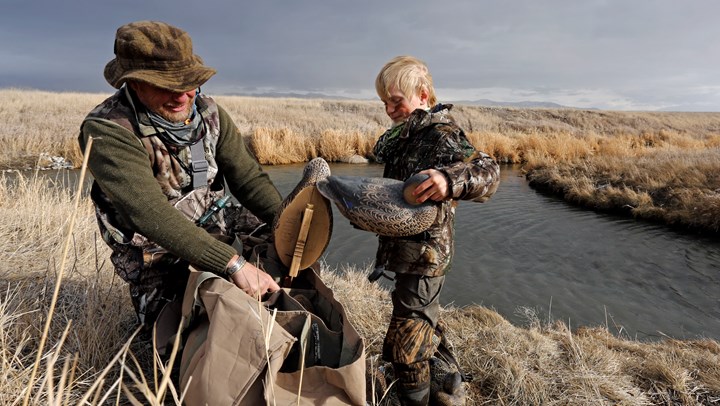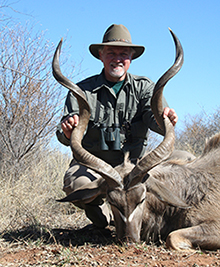
by Chris Chaffin - Thursday, July 27, 2017

Challenges to the future of hunting are many, but so are the efforts to support and grow hunting participation. The NRA, NSSF, SCI, all the “species” conservation organizations, sportsman’s clubs and the firearm/hunting/shooting industry work on programs to address the new “R3” initiative: Recruit, Retain and Reactivate.
Earlier reports on NRAHLF.org have documented the establishment of the National Hunting & Shooting Sports Action Plan prepared by the Council to Advance Hunting and the Shooting Sports, the Wildlife Management Institute and other partners. The goal: to increase participation in and support of hunting and the shooting sports.
This important undertaking is having positive results, with a handful of states working with partners and volunteers to take the national plan to the state level, where the strategies and tactics can be applied to hands-on activities. Those experiences help identify the best approaches to creating more hunters and shooters.
In early January 2017 the Hunting and Shooting Sports Workgroups of both the Western and the Mid-Western regions of the Association of Fish and Wildlife Agencies (AFWA) met to advance the R3 agenda. Participants reported on progress and assessments, as well as future needs. Many of those presentations can be viewed by clicking here.
One insightful presentation by Wisconsin DNR (Department of Natural Resources) Law Enforcement and the University of Wisconsin-Madison reported on a cooperative study to better understand how the population of the state’s hunters is changing over time and to project the future number of deer hunters.
The study revealed most Wisconsin deer hunters were over age 40. And they found that the discovery of chronic wasting disease (CWD) in Wisconsin led to a marked drop in the number of hunters in 2001-2002. Hunter numbers rebounded in subsequent years but the research revealed that the age and cohort impacts (similarities in experiences and social influences of a group bonded by time) of baby-boom-generation hunters and their declining participation would result in a 25 percent decline in hunters by 2030 and a steeper drop in hunting participation rates.
Another study examined Wisconsin DNR’s R3 “Learn to Hunt” (LTH), where interested people participate in a four-hour firearm safety and education course followed by a trial hunting event offered by members of area hunting groups and clubs. LTH waives the hunter education and license requirement, season dates and bag limits. In 2003 approximately 900 potential hunters participated. In 2013 there were 2,600, and a program evaluation showed that 90 percent of 2013 participants bought licenses the following year. However, 70 percent of them had hunted before; 80 percent of their fathers hunted; most of the remaining 20 percent were brought to the event by a grandfather or uncle; and 85 percent of the hunters were under 16. Clearly, program sponsors tended to recruit from hunter education classes.
Keith Warnke, Wisconsin DNR hunting and shooting sports coordinator, reported, “The LTH program was being delivered to people already recruited into hunting and who had a well-established pathway with strong social support. This is a high-quality opportunity and all involved enjoy it—but it was not recruiting new hunters.”
Based on this evaluation, Wisconsin DNR expanded the reach of LTH by increasing the amount of training, and recruiting young adults interested in learning to hunt for local, sustainable food—the “Learn to Hunt for Food” program. “Participants had no prior pathway to join the hunting ranks, but had an interest in hunting, money to spend on this interest, motivation to start hunting, and may have children of their own soon,” said Warnke. “But they need skills training in everything from an introduction to firearms to cooking wild game. Wisconsin DNR developed this new program to provide that training and set out to carefully monitor and measure the results.”
Important findings of WI-DNR’s experience:
Combining the Wisconsin LTH Program and the cooperative study with UW-Madison provides important knowledge on how to recruit new hunters. The additional insight being built through R3 programs and the National Hunting and Shooting Sports Action Plan is paving the way to building a larger and stronger community of hunters and shooters in the future.
What’s more, other states like Georgia, Michigan and Iowa are also “stepping down” the national plan to implement successful R3 programs. These programs have the vital potential to change the tide of dwindling hunter numbers and once again secure the American hunter’s rightful place as a stalwart component of the nation’s heritage.
■ ■ ■
About the Author
Chris Chaffin has been an outdoor communicator, educator and partnership manager for more than 40 years. He has worked on the national scene representing several prominent components of the outdoor community promoting hunting, fishing, the shooting sports and conservation. He served two terms as Treasurer for the Professional Outdoor Media Association (POMA), eventually taking on roles as vice-president, President and Chairman of the Board.

In 2007, he launched Chaffin Communications, Inc., a communications consulting company focusing on the outdoors. In 2012, with support from the Outdoor Adventure Dream Giveaway, Chaffin founded and currently manages the Outdoor Adventure Conservation Fund, a Florida non-profit established to encourage and facilitate more people participating in traditional outdoor activities. For more information, click here.
E-mail your comments/questions about this site to:
[email protected]
Proudly supported by The NRA Foundation and Friends of NRA fundraising.
